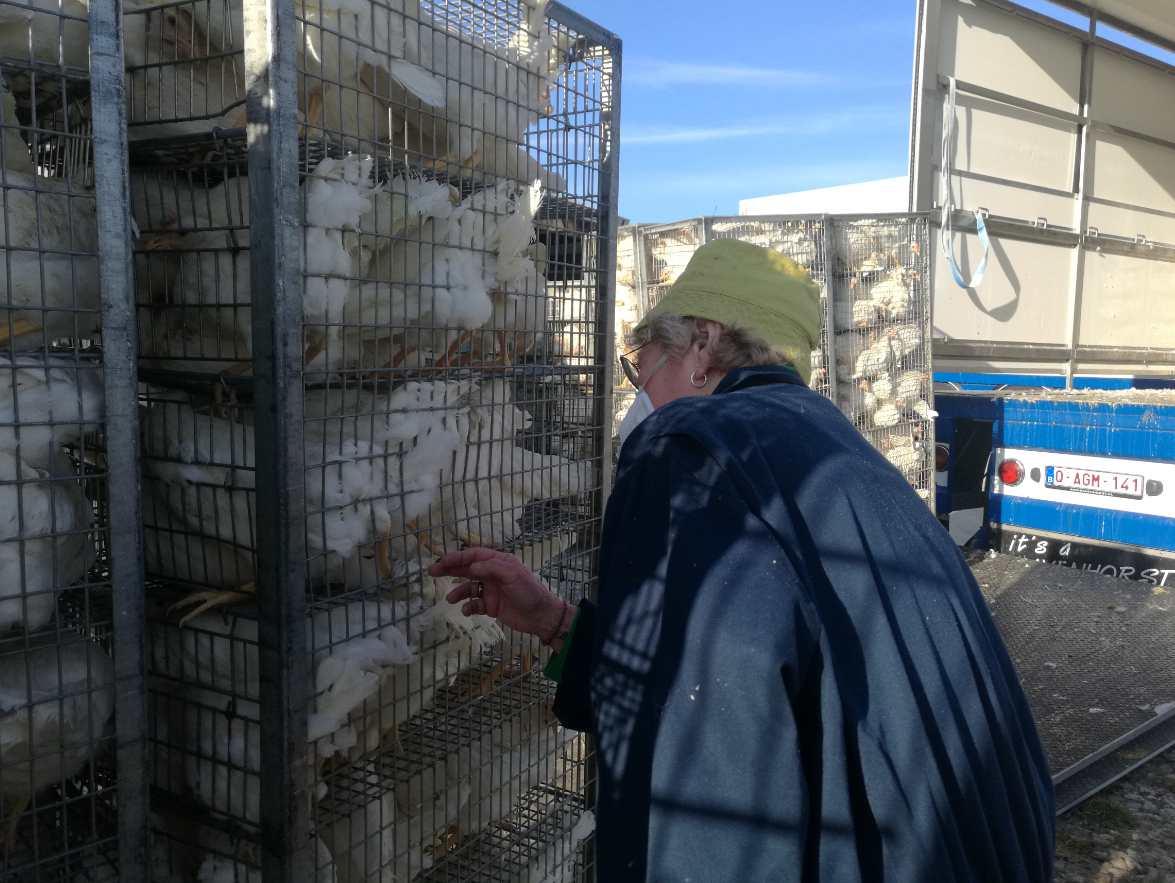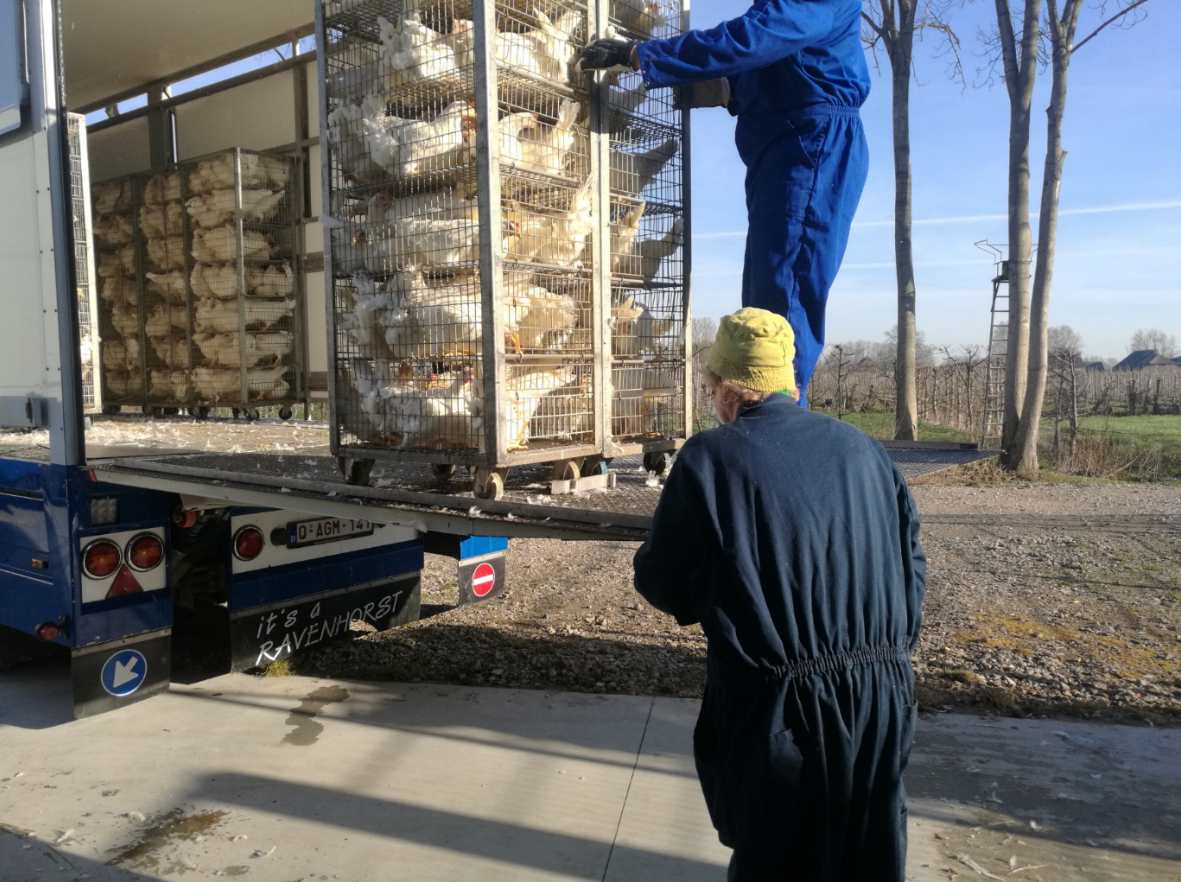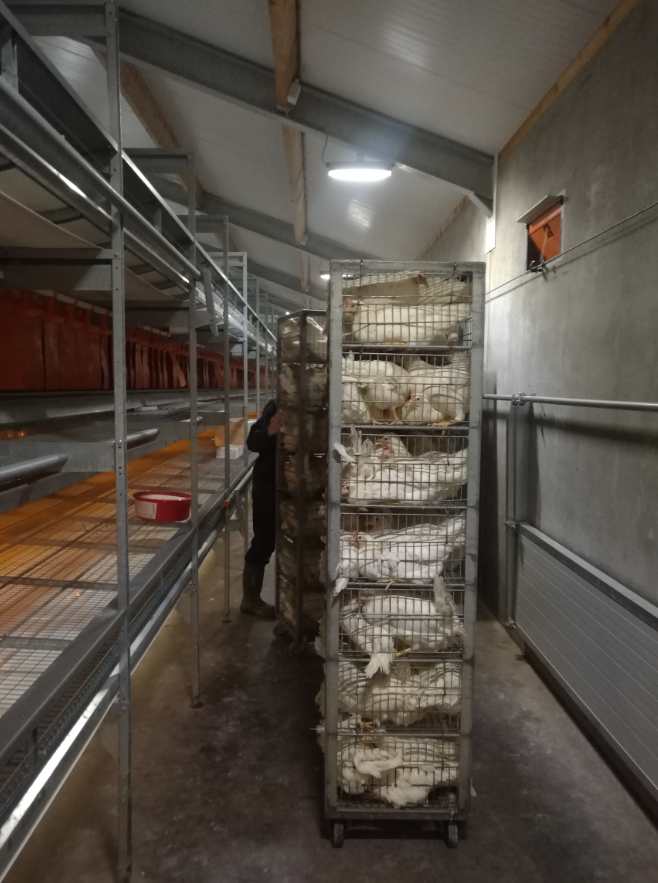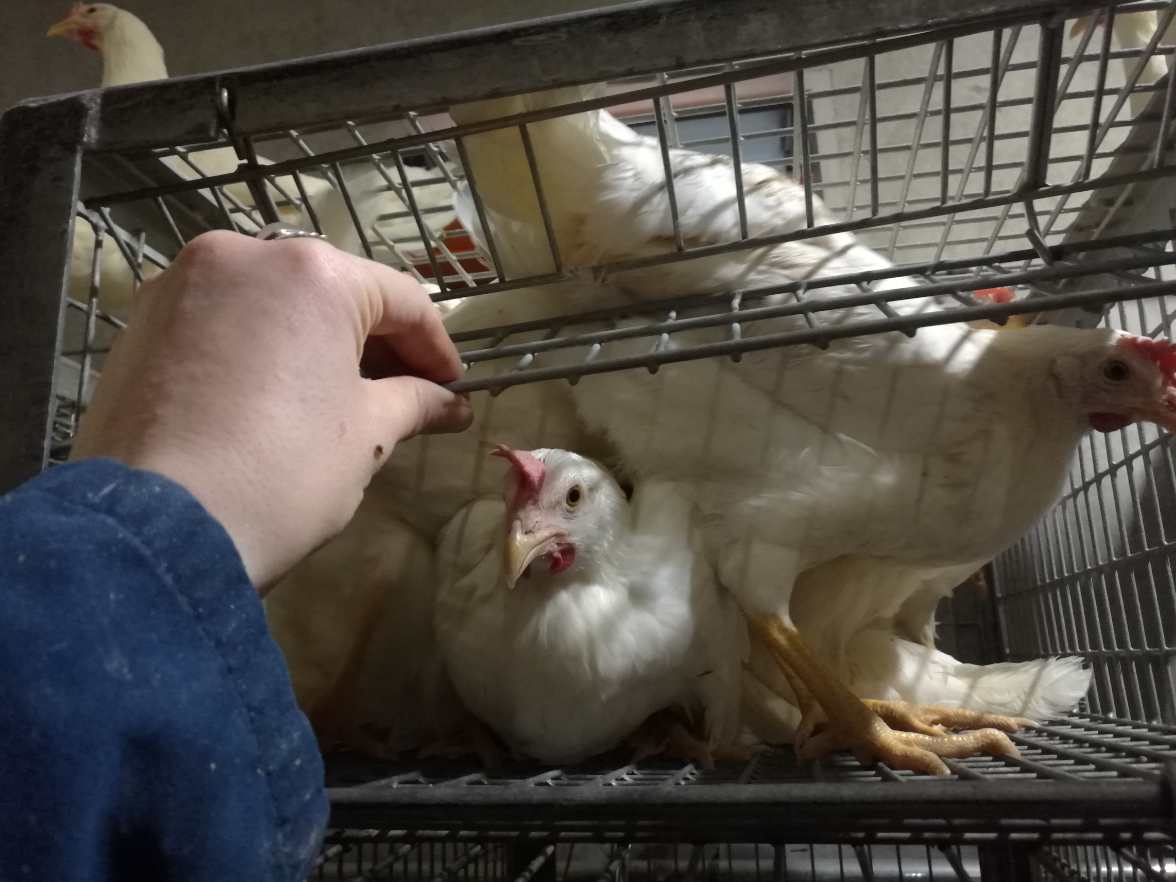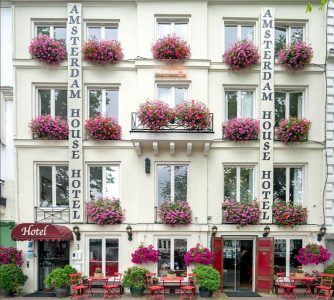This morning we visited Kipster to observe the unloading of the new pullets (young laying hens). The pullets were delivered in containers that consisted of seven levels. The containers were made of metal grids with inward- folding doors on both sides.
The containers were owned by transport company BMV from Rijkevorsel (BE). The truck that transported the containers has solid sides- only at the top and bottom was there a gap for natural ventilation. The driver informed us that the sides could be partially opened during warm weather.
Unloading
Today we observed the unloading of the pullets. The inward-folding doors of each tier were opened by a worker and then the pullets were given time to go out. A large number of the hens flew out of the container themselves, but not all of them, also because sometimes the opened folding-doors fell shut so the hens were not able to get out. Therefore, some of the hens had to be taken out manually. This was done in a few different ways. Often, they were pushed out. Some employees picked up hens using the upright method and others pulled them out by their legs. Although grabbing them by the legs only lasted a short time (the hens were not held upside down by their legs as often done during loading) we did see that this method caused the most stress (more screaming). Gently pushing hens out of the container on one side, or holding the hens by the legs with one hand whilst the other hand supporting under the breast (so that the hen stays upright and does not grab onto the grid bottom with their feet), seemed to be the least stressful methods. But overall, the unloading was done fairly. The employees were friendly, transparent, and performed their tasks with care.
Towards the end of the morning, the stress levels among the hens increased slightly as more hens were unloaded manually from the containers due to time constraints. Unloading has a limited amount of time allotted (as, the transport company has to move on to the next customer) and according to Kipster it is also not desirable for the birds to wait too long in the containers without food or water. Eyes on Animals does acknowledge this argument, but at the same time, we believe that a slightly longer waiting period would cause less stress than manually removing the hens from the container.
Design BMV containers
We saw a few pullets today with an injured toe. We suspect that this was caused during catching on the pullet farm or by the design of the containers. The containers are made of metal grid, so body parts (including toes) protrude and can bump onto something when in transit. It is also possible for the pullets to grab onto the grids when being loaded into the containers. The farmer is also unhappy about this problem because open wounds can encourage unwanted pecking at each other. The fact that the containers are made entirely of metal grids is, on the other hand, advantageous for ventilation. We will investigate how this injury occurred and how it can be prevented in the future. Finally, we noted that when the doors are pushed open, body parts can get stuck. When rushed this can occur but today the employees really paid attention to this risk.
We would like to thank Kipster for allowing us to observe the unloading of the pullets and for discussing ideas with us on where and how the welfare of the hens could be further improved. We have also been invited to take a look at the catching of the pullets in the near future. Big compliments to Kipster for their transparency and willingness !
